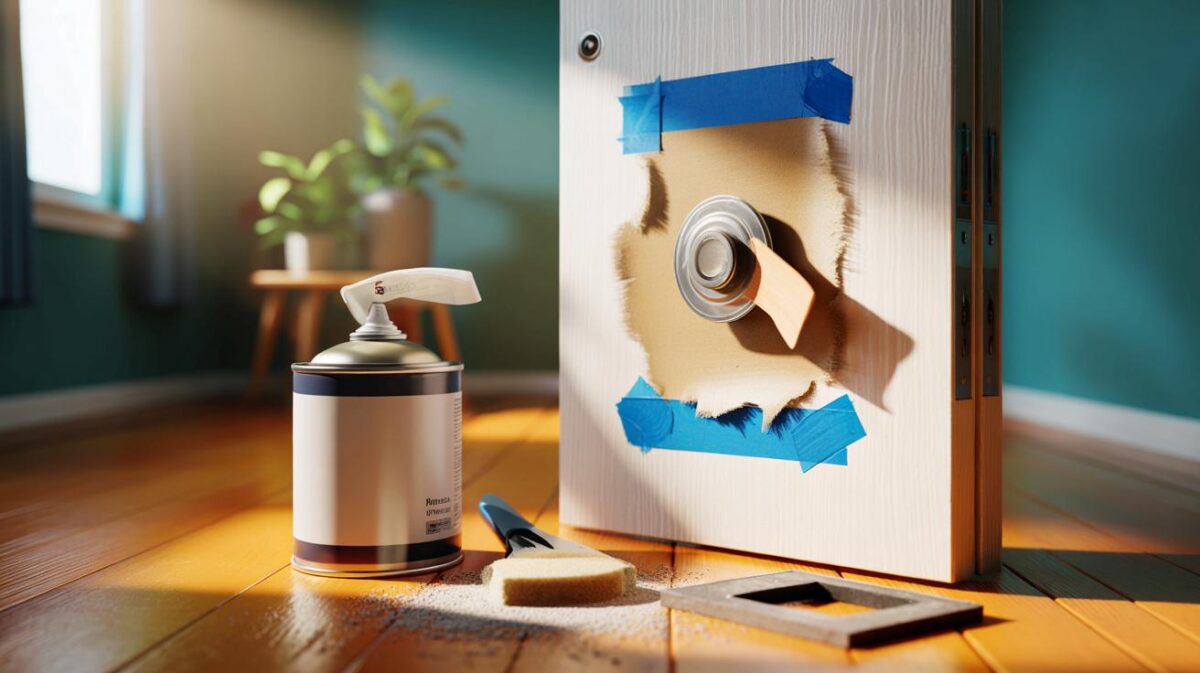You find it hiding in new shoes, lurking in a vitamin tub, tucked into a box of electronics with a bossy message: DO NOT EAT. It looks disposable, a nothing. Yet in British kitchens with steamed-up windows and cupboards that swallow smells, this tiny sachet is quietly heroic. Keep it, and food lasts longer. Keep it, and metal stays clear of rust. Keep it, and that musty hint in the back of the pantry fades. The smallest thing can tip the balance.
I saw it at my aunt’s semi in Leeds, one of those late afternoons when the kettle can’t stop whistling. Her back door kept breathing in damp from the yard, and every jar in the cupboard wore a fine coat of clammy. She reached for a salt shaker and it poured in lumps like wet sand. Then she did something both obvious and slightly eccentric. She opened her “bits drawer”, pulled out three tiny packets from old shoe boxes, and dropped them into a jam jar beside the salt and spices. The next day the clumping was gone. The cupboard smelled like nothing at all. It felt like a small domestic spell. What else could those packets do?
The tiny packet with a big job
That little packet is silica gel, a desiccant that drinks moisture from the air. Each bead is full of pores, almost like a solid sponge. In a kitchen, where steam rises, kettles sing, and pasta water fogs every surface, those beads are gold. It’s not glamorous. It doesn’t beep or glow. It just sits there, quietly keeping the air in a small space drier than it would be on its own.
We’ve all had that moment when a favourite biscuit turns to cardboard overnight. A reader in Cornwall told me she started slipping a packet into the tin with her ginger snaps, separated by a little paper. The crunch returned and stayed for a week longer. There’s a reason many food packs ship with desiccants: controlling humidity helps keep texture and flavour. The same logic applies to spice jars, tea caddies, and that rogue bag of brown sugar that loves to turn to gravel.
Silica gel doesn’t “dry” your food in the sense of sucking moisture out of it directly. It lowers the relative humidity of the air in the container. Less moisture in the air means fewer chances for clumping, sogginess, or musty odours. In the UK, indoor humidity can hover around 40–70% depending on the season and your habit of opening windows. A sealed tub with a silica packet can nudge that microclimate down enough to make a real difference. It’s a small, local fix that stacks up over time.
How to use silica gel like a pro
Start with the easy wins. Slip a packet into a sealed biscuit tin, a spice box, or the tub where you store coffee pods. Keep the packet separate from bare food using a little envelope of baking paper or a mesh sachet. In drawers, pop one near steel knives or your beloved old tin opener. In the cupboard under the sink, tuck a packet near the back where the pipe sweats on cold days. If you’ve got a lidded tub of seeds or dry pet treats, one packet in the lid space can keep crispness on your side.
Let’s be honest: nobody does that every day. So think once, in batches. Gather packets from shoe boxes and vitamin bottles into a clean jar. Label it “dry helpers” and leave it in the cupboard. Every time you decant flour, rice, or cocoa into a container, drop in a packet on top, away from direct contact with the food. If a packet goes soft or the beads change colour (on indicator types), it’s time for a refresh in the oven. Simple rhythm, no fuss.
There are a few things to watch. Many packets are food-safe because they ship inside food packages, yet they’re not edible and can be a choking hazard for kids and pets. Keep them out of direct contact with unwrapped food and choose sachets labelled for food environments when you can. Regenerating is straightforward: spread packets on a baking tray and dry at 100–120°C for an hour or two. Avoid microwaves unless the manufacturer says yes. Some indicator gels turn blue or pink using older cobalt salts, which you might want to avoid; newer orange or green indicators are the gentler choice.
“The trick isn’t to eliminate moisture completely,” a food scientist told me once, “it’s to keep the microclimate steady. Silica gel buys you stability.”
- Use in sealed spaces: tins, jars, drawers.
- Keep away from direct contact with unwrapped food.
- Refresh in a low oven when saturated.
- Prefer orange/green indicator beads over blue.
- Store spares in an airtight jar for next time.
What the small thing changes
There’s a bigger story hiding in these tiny packets. Moisture makes food spoil faster and metal tools lose their edge. In a cupboard, the difference between 65% and 50% relative humidity can be the line between clumpy turmeric and a free-flowing sprinkle. In a house where laundry dries indoors, every little patch of dryness helps. Your cupboard becomes calmer. You don’t play whack-a-mole with sogginess.
Consider the economics. A box of biscuits that lasts two extra days gets eaten with pleasure, not duty. Spices stay fragrant, which means you use less and waste less. A razor in the bathroom cabinet stays usable for another week if it lives with a sachet between shaves. It’s not a revolution. It’s a nudge that adds up in a very British way: quietly, in the background, with no fuss or fanfare.
There’s also the reuse angle. Those packets arrive at your door whether you want them or not. Give them a second life and you reduce waste and spend less on dehumidifying gadgets. Slip one into the box with old photos. Drop one in the camera bag. Tuck a packet into the toolbox so drill bits don’t blush with rust. When a phone takes a splash, rice gets the headlines, but a tub with silica packets does a better, cleaner job. And if your cupboards tend to carry cooking smells, a drier atmosphere blunts that stale edge. It’s not magic, just physics lending a hand.
Practical fixes and gentle habits
Here’s a simple routine for your cupboard. Empty and wipe the shelves with hot soapy water, then leave the doors open for a half hour. Place dry tins, jars, and baskets back in, and slide two or three silica packets into the back corners. One goes into the salt and sugar box, one into the tea caddy, one into the baking drawer. If you store crisps or crackers, add a packet to the container once the bag is open. Refresh the packets monthly, or when indicator beads say they’re done.
If your cupboard is near a boiler or an exterior wall, double up. Put a packet behind the spice rack and another in the cupboard’s top shelf where warm air lingers. Avoid throwing loose packets straight into flour or unwrapped snacks. Keep them in little muslin pouches or paper sleeves. If you’ve got curious toddlers, keep the packets high, and explain the “do not eat” label in simple terms. And if you ever see a torn sachet, bin it and vacuum the area. Better safe than sorry.
People get nervous about safety, and that’s fair. Silica gel itself is chemically inert. The risk is choking and, for some older indicator types, contact with cobalt dyes. Choose plain beads or modern orange indicators and keep them tucked away. If a pet chews one, call your vet for guidance.
“Treat desiccants like matches,” says a home safety officer in Manchester. “Useful, harmless when handled right, and not toys.”
- Keep packets out of reach of children and pets.
- Prefer sealed containers for use in the kitchen.
- Regenerate at low heat; avoid microwaving mixed materials.
- Replace damaged or leaking sachets immediately.
- Look for food-environment labels when possible.
A small habit with a big ripple
Once you notice the quiet work of dryness, you see it everywhere. The nail scissors that stay sharp. The cocoa that refuses to cake. The cupboard that smells of nothing, which is how a good cupboard should smell. One tiny packet can’t fix a damp house, and it won’t fight a full-on leak. It guides the microclimate where you keep the things you love. That’s enough.
What begins with biscuits becomes a way of caring for a space. You start to respect the little packets you used to throw away. You stop wrestling with salt shakers. You taste cardamom like it’s meant to taste. *A cupboard can be a peaceful place, and peace is mostly made of small decisions.* Try it for a week. See if your kitchen hums a little quieter. See what happens to the things you keep.
| Key points | Detail | Reader benefit |
|---|---|---|
| Silica gel tames humidity in small spaces | Place packets in sealed tins, jars, and drawers to lower relative humidity | Longer-lasting crunch, fewer clumps, less musty odour |
| Easy to regenerate and reuse | Dry in an oven at 100–120°C for 1–2 hours; avoid microwave unless approved | Saves money, cuts waste, keeps performance consistent |
| Safety and placement matter | Keep from children and pets; choose food-environment sachets; avoid direct contact with unwrapped food | Peace of mind with better results and fewer mishaps |
FAQ :
- Can I put silica gel directly in my sugar or salt?Place the packet inside the container but not in direct contact with loose food; use a paper sleeve or small mesh pouch.
- How do I know when a packet is “full”?Indicator beads change colour when saturated; plain beads feel heavier and may lose effectiveness. Refresh monthly as a rule of thumb.
- Is silica gel toxic if my dog eats it?The gel itself is inert, but sachets are choking hazards and some older indicators use dyes. Contact your vet for advice right away.
- Can I dry packets in the microwave?Some can, many can’t due to staples or plastic. The safe universal method is a low oven for an hour or two.
- Will this fix a damp cupboard on an exterior wall?It helps control microclimate in containers and corners, but you’ll still need ventilation, heat, and to tackle any underlying moisture source.









